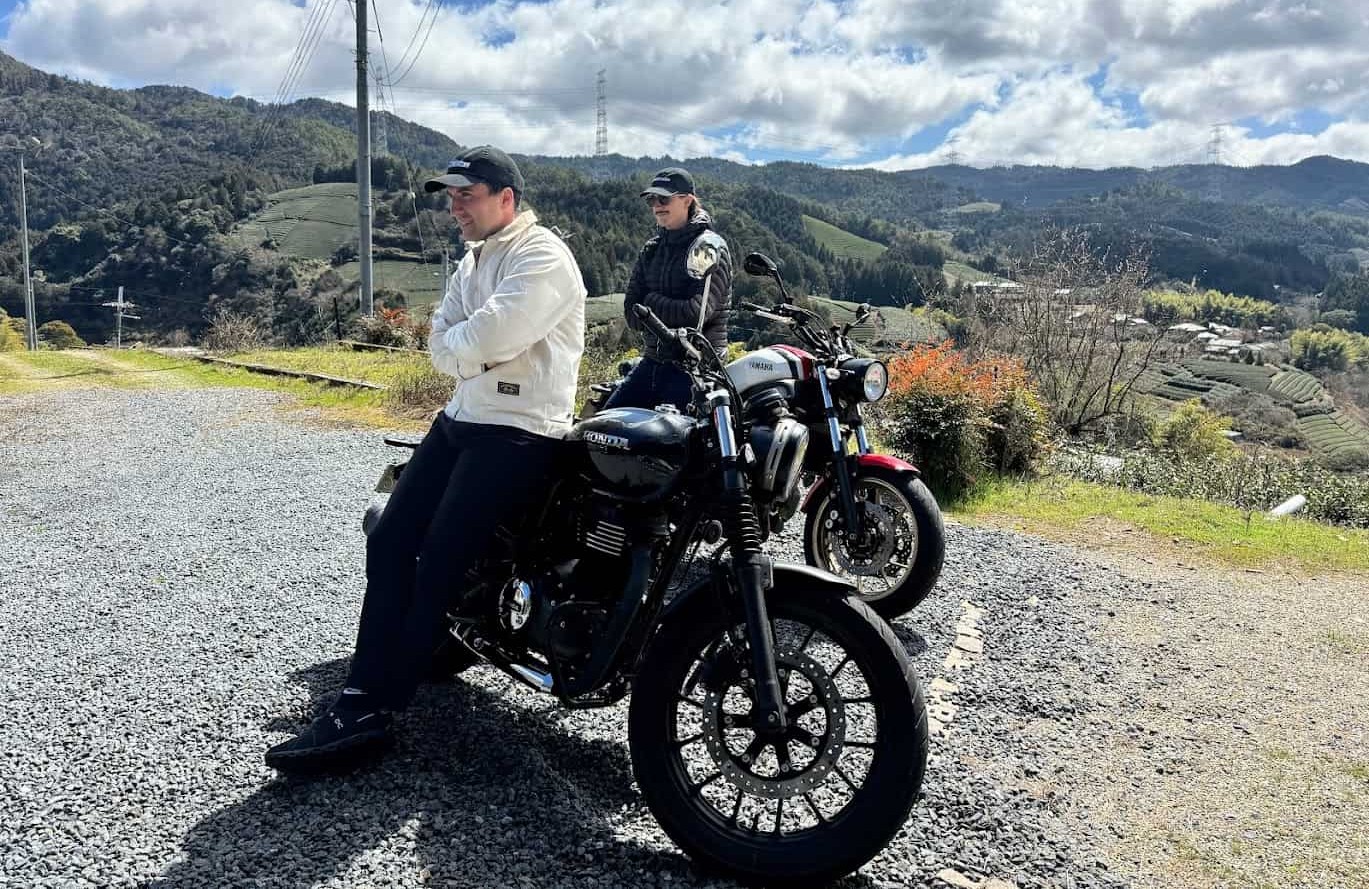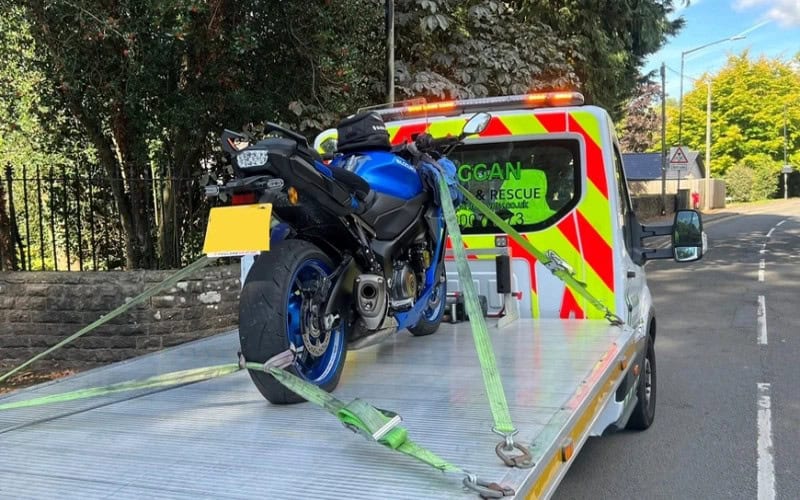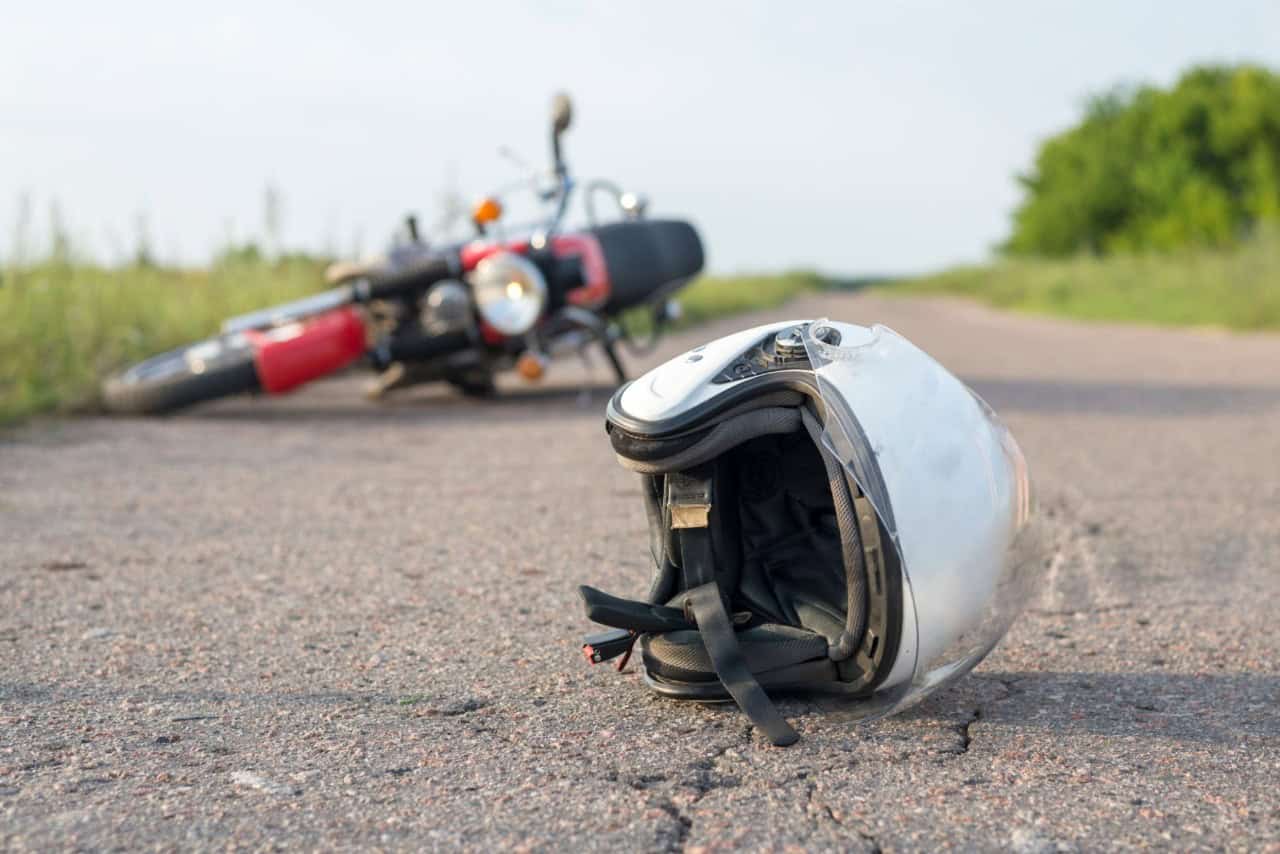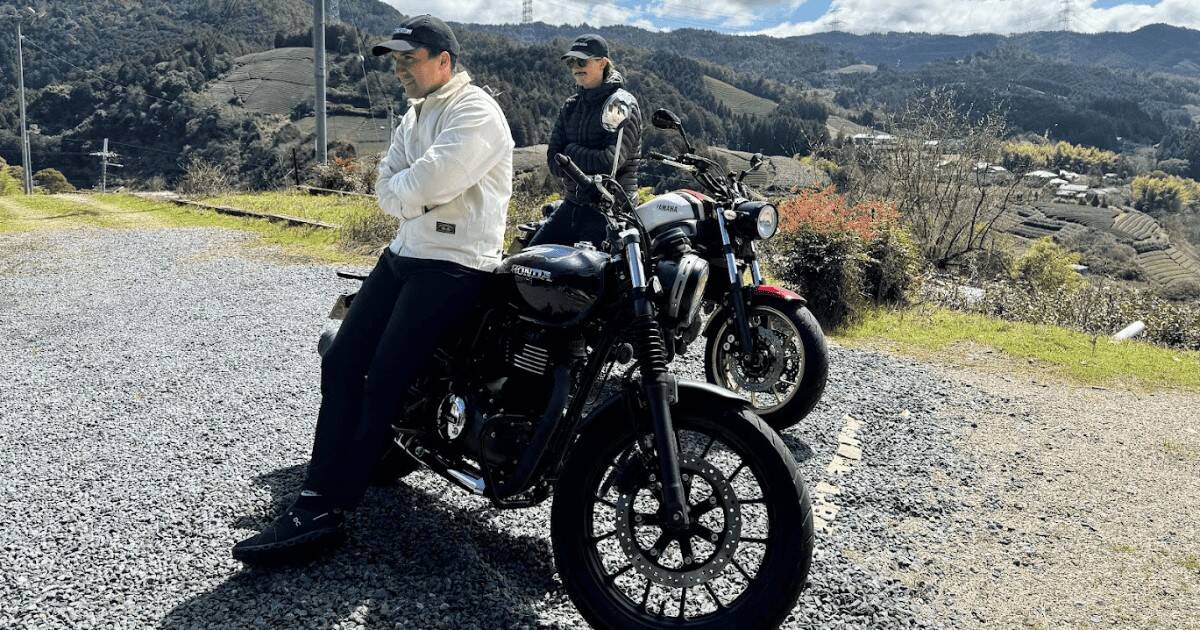
Cheapest Full Coverage Motorcycle Insurance for Riders
left for contents
You don’t need to empty your wallet just to protect your bike — full coverage can actually be affordable if you know what to ask for. Most riders land here wondering one thing: “What’s the cheapest way to get full coverage without losing protection?”
So let’s start with the quick answer — the typical cost ranges, what each rider type should consider, and where to find the best full-coverage options right now.
Best Full-Coverage Motorcycle Insurance Options (2025)
| Rider Type | Recommended Option | Ideal Coverage Setup | Estimated Annual Cost | Best For |
|---|---|---|---|---|
| City Commuter | Progressive Motorcycle Insurance | Full coverage with liability, collision, comprehensive, and UM/UIM | $400–$800 | Daily riders who need reliable roadside help and flexible deductible options |
| Weekend Rider / Low-Mileage Rider | GEICO Motorcycle Insurance | Liability + comprehensive; skip collision if the bike’s older | $150–$500 | Casual riders who only hit the road occasionally and want simple, low-cost full coverage |
| Touring / Long-Distance Rider | AAA Motorcycle Coverage | Full coverage with accessory, roadside, and trip interruption | $600–$1,200 | Cross-country riders who value high towing limits and travel reimbursement |
| New / Young Rider (Under 25) | Dairyland Motorcycle Insurance | Full coverage with MedPay and UM/UIM; take safety course for discounts | $500–$1,500 | New riders who need flexible payments and learner-friendly full coverage |
| Military / Veteran Rider | USAA Motorcycle Insurance | Full coverage bundled with other USAA policies | $250–$700 | Service members and families who qualify for exclusive discounts |
| Multi-Bike Owner / Enthusiast | AMA Roadside Assistance | Membership coverage for multiple bikes, towing, and extras | $150–$300 (membership-based) | Riders with multiple bikes and nationwide travel coverage |
Note: Costs reflect 2025 national averages for experienced riders with clean records. Prices vary by state, age, and bike type.
Most riders fall somewhere between these profiles. The table gives you the short version — what fits your riding style and budget — before we dive into what “full coverage” actually means and why it’s worth keeping.
What Full Coverage Motorcycle Insurance Includes
“Full coverage” isn’t an official policy type — it’s a combination of protections that go beyond state-mandated liability. Liability pays for injuries or property damage you cause to others, while full coverage adds protection for your own bike and passengers. (lainsurance.com)

Below are the main coverages that make up a full-coverage policy:
Liability Insurance
- Bodily injury and property damage: Pays medical expenses, lost wages and legal fees for people you injure and repairs for property you damage. Minimum required limits vary widely by state; for example, Texas requires 30/60/25 ($30,000 per person, $60,000 per accident and $25,000 property damage), while California’s minimum is 15/30/5.
Collision Coverage
- Pays to repair or replace your motorcycle when you hit another vehicle or an object (guardrail, fence, tree, etc.). You choose a deductible—usually $500 or $1,000—that you must pay before the insurer covers the rest.
Comprehensive Coverage
- Covers non‑collision events such as theft, vandalism, fire, natural disasters or falling objects. It protects your bike if it’s stolen or damaged by severe weather, and is a key reason why full coverage policies cost more than liability‑only.
Medical Payments (MedPay) / Personal Injury Protection (PIP)
- MedPay is an optional add‑on that pays medical bills for you and your passengers regardless of fault. It covers health‑insurance deductibles, doctor visits, X‑rays, surgery, ambulance fees, rehabilitation and nursing care. It also covers you if you’re injured as a pedestrian or passenger and supplements your health insurance. (investopedia.com)
- PIP (required in the 12 no‑fault states) covers many of the same expenses as MedPay but may also reimburse lost wages and other costs. Some states won’t let you carry both at the same time.
Uninsured/Underinsured Motorist (UM/UIM)
- This optional coverage pays your medical bills or bike repairs if a driver with no insurance — or too little — injures you. (freedominsurancenc.com) It’s especially crucial in hit‑and‑run accidents. According to one independent agency, UM/UIM coverage typically adds about $5–$15 per month to a full coverage policy. (carusoins.com)
Additional Options
- Accessories and custom parts coverage: Protects aftermarket upgrades, custom paint or gear like saddlebags and fairings.
- Roadside assistance and trip interruption: Tows your bike, jumps a dead battery or reimburses lodging and meals if you break down far from home.

- Replacement cost coverage: Pays to replace your bike at its full value rather than actual cash value. (masterpolemurphy.com)
Tip: Full coverage doesn’t automatically include MedPay, UM/UIM, accessories coverage or PIP. Always confirm which extras are included and add what you need.
Average Cost of Full Coverage vs. Liability‑Only
Even though full coverage costs more than basic liability, it protects your bike, your gear, and your health — things liability-only can’t touch. In most states, the gap between them is smaller than riders expect. Many pay only a few extra dollars a month for full protection, especially when they bundle or raise their deductible.
Here’s a quick look at how full coverage stacks up against liability-only insurance based on 2025 national averages:
| Coverage Type | Average Monthly Cost | Average Annual Cost | What It Covers |
|---|---|---|---|
| Liability Only | $12–$68 | $156–$816 | Meets state minimums; pays for injuries and property damage you cause to others. No protection for your own bike. |
| Full Coverage | $33–$148 | $399–$1,776 | Includes liability, collision, and comprehensive coverage. Protects you, your bike, and your gear against crashes, theft, and disasters. |
| Standard Bike (Full Coverage) | ≈ $108 / month ($1,296 / year) | — | Business Insider sample for a mid-weight “standard” motorcycle. |
| Standard Bike (Liability Only) | ≈ $68 / month ($816 / year) | — | Same source; shows how little liability-only protects beyond legal minimums. |
Sources: MoneyGeek, LA Insurance, and Business Insider 2024–2025 motorcycle insurance cost analyses.
Why Full Coverage Is Worth It
When you ride, your bike isn’t just transportation — it’s an investment, a source of freedom, and sometimes your only escape from traffic and stress. Full coverage protects all of that.
It’s tempting to stick with the minimum just to save a few bucks, but those savings disappear the moment someone rear-ends you, a deer jumps out, or your bike vanishes from the parking lot. Full coverage makes sure you can repair or replace your motorcycle and stay on the road instead of starting over.
Here’s what makes it worth keeping:
- Protects your investment: Collision and comprehensive coverage pay to repair or replace your bike after accidents or theft — crucial since motorcycles are often totaled or stolen.
- Required for financed bikes: If you’re still paying off a loan, your lender will almost always require full coverage.
- Covers your gear and custom parts: Optional accessory coverage protects helmets, luggage, exhausts, paint, and other upgrades that liability-only doesn’t touch.
- Shields you from uninsured drivers: Uninsured/underinsured motorist coverage fills the gap when the other driver can’t pay for damage or injuries.
- Adds peace of mind: You can focus on the ride, not on what a crash or theft might cost.
Full coverage is worth keeping — but how much you’ll actually pay depends on more than just what’s in your policy. Insurers price every rider differently based on factors you can control (like training, mileage, or bike type) and some you can’t (like age or ZIP code).
Understanding how these details shape your quote is the key to getting full protection without overpaying.
Factors That Affect Full Coverage Pricing
Motorcycle insurance rates are highly personalized. Age, experience, location, bike type and coverage limits matter more than most riders realize.
Here are the major variables:
Age, Experience & Training
- Younger riders pay more. A 16‑ to 20‑year‑old may pay 41 percent more than a 35‑year‑old, and teenagers can see premiums over $100 per month. Riders in their mid‑30s average around $38 monthly.
- Experience trumps age. An older but inexperienced rider can pay more than a younger rider with several years of accident‑free riding.
- Training helps. Completing a Motorcycle Safety Foundation (MSF) course or similar training can cut premiums by 5–15 percent.

Type of Bike & Engine Size
- Sport bikes are the most expensive to insure, costing 3.5 times more than cruisers due to higher speeds, accident rates and theft statistics.
- Touring bikes are roughly 33 percent cheaper than sport bikes but still cost more than cruisers.
- Cruisers and standard commuter bikes enjoy lower premiums because of relaxed ergonomics and better safety records.
- Engine size matters: A 600cc bike may cost $60–$150 per month for full coverage, while smaller engines cost less.
Location, Storage & Riding Habits
- State and ZIP code: Premiums vary widely. Kentucky averages $69 per month for full coverage, while North Dakota riders pay around $18. Warmer states with year‑round riding and high theft rates tend to be more expensive.
- Urban vs. rural: City riders typically pay 15–30 percent more because of increased traffic and theft.
- Storage: Keeping your bike in a locked garage can cut premiums by 5–10 percent.
- Mileage: Weekend riders and seasonal riders pay less than daily commuters. Insurers offer lay‑up policies that suspend collision coverage during winter months yet maintain comprehensive protection.
Coverage Limits & Deductible
- Higher coverage limits mean higher premiums, but they protect more assets. Riders often choose liability limits of 50/100/25 or higher; ValuePenguin’s survey used $50k/$100k bodily injury and $25k property damage with a $500 deductible.
- Increasing your deductible from $500 to $1,000 can save 10–15 percent, but be sure you can afford the out‑of‑pocket expense after an accident.
Riding & Claims History
- A clean driving record yields the best rates. Accidents, speeding tickets or DUI will increase premiums.

- Claims history: Frequent claims signal higher risk and raise premiums.
Credit (where allowed)
- In most states, insurers use credit‑based insurance scores. Better credit often means lower premiums.
Strategies to Get the Cheapest Full Coverage
Full coverage premiums aren’t carved in stone. Riders can substantially lower costs by combining discounts, choosing the right bike, bundling policies and tailoring coverage. For more money-saving hacks, see our full guide on cheap motorcycle insurance and smart ways to save.
Below is a checklist of cost‑reduction strategies:
| Strategy | How It Saves |
|---|---|
| Take an approved safety course and maintain a clean record | Completing a Motorcycle Safety Foundation or similar course can reduce premiums by 5–15 %. A clean riding record triggers safe‑rider discounts. (your-policy.com) |
| Bundle policies | Insurers offer multi‑policy discounts for bundling motorcycle with home or auto insurance. Multi‑bike policies can also lower rates. |
| Choose a lower‑risk bike and downsize the engine | Sport bikes cost 3.5 times more to insure than cruisers. Opting for a cruiser or smaller engine can slash premiums. |
| Raise your deductible | Increasing the collision/comprehensive deductible from $500 to $1,000 can save 10–15 %. |
| Install anti‑theft devices and store indoors | Disc‑lock alarms, GPS trackers or chains can earn discounts. Parking in a locked garage can cut premiums 5–10 %. |
| Ask for low‑mileage or seasonal discounts | Weekend or seasonal riders may qualify for low‑mileage discounts. Lay‑up policies suspend collision coverage during storage months. |
| Membership and loyalty perks | Members of motorcycle associations (AMA, HOG, BMW MOA) may receive exclusive discounts. Loyalty discounts reward long‑term customers, while other insurers entice new customers with competitive rates. |
| Maintain good credit and review annually | Good credit can lower your insurance score. Reviewing your policy each year ensures your premium reflects your current mileage and coverage needs. |
| Pay annually | Some insurers discount premiums when you pay in full rather than monthly. |
| Work with an independent agent | Independent brokers can compare quotes across insurers, uncover hidden discounts and ensure you don’t overpay. |
Usage‑Based and Pay‑Per‑Mile Options
Riders who log only a few thousand miles per year often subsidize high‑mileage riders under traditional rating models. Usage‑based policies flip that script, charging based on miles driven. VOOM is one of the first pay‑per‑mile programs for motorcycles. It advertises rates as low as $50 per year and savings up to 60 % compared with standard policies.
The company requires no tracking devices; you simply snap a picture of your odometer each month and pay a small base fee plus a per‑mile rate. According to VOOM’s site, riders save money because they only pay for the miles they ride, and they can start or stop coverage easily.
If you own more than one bike or ride only occasionally, you’ll love our breakdown of multi-bike and pay-per-mile insurance.

Many mainstream insurers also offer usage‑based telematics programs. These typically use smartphone apps or plug‑in devices to monitor mileage and sometimes riding behaviour. Low‑mileage riders can receive substantial discounts, while frequent riders might not benefit. When considering a pay‑per‑mile program:
- Check whether the base rate plus per‑mile charges still meets your budget.
- Confirm how the insurer verifies mileage (odometer photos or GPS tracking).
- Understand whether the program still provides full coverage (liability, collision, comprehensive). VOOM’s policies include collision and comprehensive if you choose those options.
- Be aware that heavy riding seasons (spring/summer) will increase premiums.
Discounts and Hidden Savings Many Riders Miss
Beyond the major cost‑cutting strategies above, here are often‑overlooked savings:
- Anti‑theft and garaging discounts: Many insurers reward riders who install GPS trackers, disc locks or alarms and who park in a locked garage.
- Multi‑bike discounts: Insuring more than one motorcycle with the same carrier often yields a reduced rate.
- Safety gear discounts: Some insurers reduce premiums if you equip your bike with anti‑lock brakes or wear approved helmets.
- Professional/veteran discounts: Members of certain professions (teachers, first responders) or veterans may receive special rates.
- Good student discounts: Younger riders who maintain high grades sometimes qualify for discounts.
- Affiliation and club memberships: American Motorcyclist Association (AMA), Harley Owners Group (HOG), BMW Motorcycle Owners of America and other clubs often offer insurance partnerships.

Buying Guide: Shopping for Full Coverage the Smart Way
1. Define Your Coverage Needs
- Assess your bike’s value and usage. A brand‑new, high‑value motorcycle or financed bike warrants collision and comprehensive. If you ride an older or low‑value bike, you might drop collision and just keep comprehensive for theft and natural disasters.
- Consider your medical coverage. If you have good health insurance, MedPay may be less critical. Riders in no‑fault states should consider PIP if required.
- Decide on accessory coverage. Aftermarket parts and expensive gear often require separate endorsements.
2. Compare Quotes Across Multiple Insurers
- Collect quotes from at least three insurers. Rates can differ by $33 per month between the cheapest and most expensive companies.
- When comparing, ensure each quote uses identical liability limits, deductibles and coverage options. Differences in limits or deductibles can distort comparisons.
- Ask about hidden discounts. Some companies offer loyalty savings, safe‑rider discounts or anti‑theft discounts that aren’t automatically applied.
3. Evaluate Usage‑Based or Pay‑Per‑Mile Options
- Calculate your annual mileage. If you ride fewer than 2,000–3,000 miles a year, pay‑per‑mile insurance may reduce costs significantly.
- Compare base rates and per‑mile charges to conventional premiums. Remember that high‑mileage months may offset savings.

4. Balance Deductible and Premium
- Choose a deductible you can afford. Raising your deductible from $500 to $1,000 can save 10–15 percent on premiums, but you’ll pay more out of pocket if you file a claim.
- If you rarely file claims and have savings to cover a higher deductible, the trade‑off can be worthwhile.
5. Review Policy Annually and Adjust
- Life changes — move to a new zip code, ride less, upgrade your bike. Update your policy to reflect new circumstances and avoid overpaying.
- Consider dropping collision on older bikes once their value drops below your deductible.
- Re‑shop quotes if your rates increase significantly or if you add modifications.
6. Understand Exclusions and Optional Add‑Ons
- Full coverage doesn’t cover wear and tear, mechanical breakdowns or intentional damage. It also excludes track use and commercial purposes.
- Accessories and gear coverage is optional and may be capped. Make sure the limits cover custom parts or expensive helmets.
- Roadside assistance, trip interruption and rental reimbursement are low‑cost add‑ons that can be worthwhile for touring riders.
Final Thoughts: Full Coverage Without Full Price
Full coverage motorcycle insurance protects your bike, your health and your finances — but it doesn’t have to decimate your budget. Nationwide averages suggest that full coverage can cost as little as $33 per month, and many riders secure rates lower than liability‑only policies by choosing the right bike, raising deductibles and stacking discounts.
Factors such as age, location, bike type and storage play outsized roles in premiums. By understanding these variables and leveraging discounts like safety-course completion, bundling and anti-theft devices, riders can slash full-coverage costs while maintaining robust protection. For more ways to balance savings with solid protection, check out our guide on affordable motorcycle insurance.
Usage‑based programs like VOOM’s pay‑per‑mile insurance demonstrate that flexibility is the future. Riders who log few miles can pay a fraction of traditional premiums. Meanwhile, savvy shopping — comparing quotes, adjusting deductibles and reviewing policies annually — ensures you’re never overpaying for coverage.
Ultimately, the goal isn’t to buy the cheapest policy but to find affordable full coverage that fits your lifestyle. With the right knowledge and a willingness to ask for discounts, you can ride confidently knowing that both you and your bike are fully protected without emptying your wallet.
Related

Best Motorcycle Insurance: Coverage, Value & Peace of Mind
Discover the best motorcycle insurance for your riding style. Learn which coverages matter most, how to compare quotes, and ride with true peace of mind.


